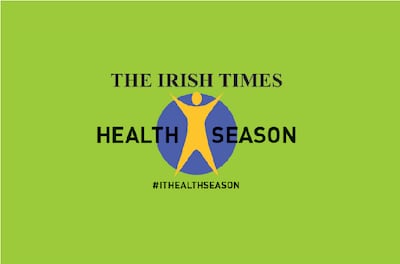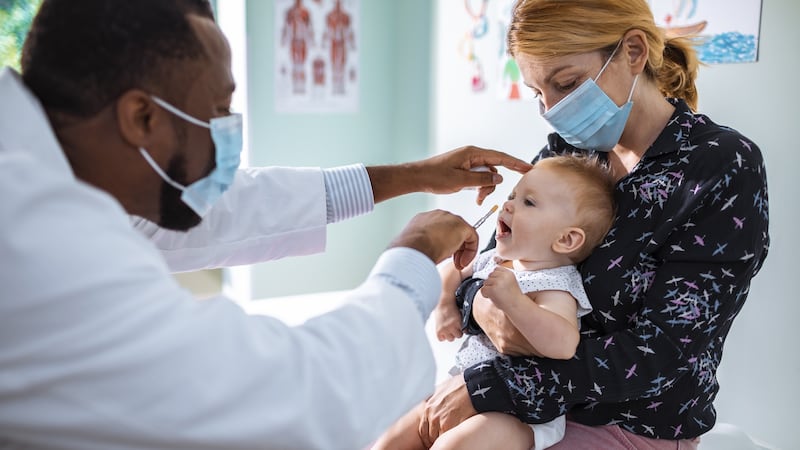
- In Ireland, we have observed increasing Emergency Department (ED) attendances for common childhood illnesses which, with some guidance for parents, could be safely managed at home. On top of that, necessary public health guidance relating to Covid-19 has appropriately directed parents to seek testing for symptoms of viral illness. This, perhaps, has created an impression that illnesses which cause common symptoms are putting children at significant risk. In fact, Irish children have never been healthier, thanks to enhanced living standards and widespread immunisation for some serious illnesses.
- All children experience common viral infections and these are generally not dangerous. Children under the age of five will get up to 11 or 12 infections a year, clustered in the winter months. They may cause fever for a few days, along with some or all of the following symptoms: cough, sore throat, runny nose, vomiting, diarrhoea, rashes. They generally resolve without medications within a week to 10 days. Pharmacies and GPs are the best support in managing these conditions if you are unsure.
- Always follow the latest public health guidance for Covid-19, see hse.ie. Its undertheweather.ie site also contains lots of useful, easy-to-read information.
High temperatures
- Many parents worry about fever, how high it is, and whether or not it comes down with paracetamol or ibuprofen. Fevers are the body’s natural response to fighting an infection and temperatures will jump up and down over a few days. How high the temperature goes, or how it responds to paracetamol or ibuprofen, doesn’t tell us how serious the infection is or isn’t. It’s only when the child is very unwell with other signs of illness – or under three months – that they may benefit from assessment in the ED. The best way to measure a child’s temperature is with a digital thermometer (under the arm for younger infants).
- If a child has a high temperature, and is coping and reasonably happy, then there’s no need to do anything. Many children are miserable when they have fever, so giving paracetamol or ibuprofen to make them comfortable is worth trying. We don’t recommend underdressing children with fever, or trying to environmentally cool them with wet sponging. Some children may have a fit or a convulsion associated with a fever. These are not harmful (although frightening for parents to experience), and are generally not prevented by trying to control the child’s temperature.
- Viral respiratory infections (colds and flus) cause runny noses, sore throats, cough and fever. They generally resolve over a week or two with fever for only the first few days. Cough medicines or antibiotics don’t work for viral respiratory infections. Manage discomfort with paracetamol or ibuprofen and try to keep them hydrated. A cough may linger for weeks. If there are concerns, your GP can advise.
Respiratory problems
- Bronchiolitis is a viral respiratory infection that affects infants under one. Infants can be chesty, causing increased breathing difficulty and reduced feeding. Infants may struggle to feed enough to keep hydrated. If they are taking less than half normal daily feeds, bring them for assessment to an ED.
- Asthma frequently flares up in young children during winter. The best way to manage asthma is with your GP, who can provide guidance on preventative treatment and an action plan for flare-ups. However, come to the ED or call an ambulance for severe breathing difficulties.

- Sore throats are usually caused by viruses or sometimes by bacteria (“strep throat”). Treat with pain relief, fluids and throat lozenges for older children. If they aren’t improving, or have a high fever, check in with your GP. Strep throats get better by themselves, but we generally treat with antibiotics to prevent some rare complications.
Vomiting and diarrhoea
- Gastroenteritis (vomiting and diarrhoea bugs) usually have no specific treatment and resolve in time. Ensure children drink enough to replace fluids lost through vomiting and diarrhoea. In babies give small frequent milk feeds. This can be supplemented with oral rehydration solutions such as Dioralyte. Young children are more prone to dehydration or low blood sugars so using oral rehydration solution, or half apple juice and half water, is better than just water. Fluids containing too high a sugar concentration may worsen diarrhoea.
- Give fluids “little and often”. Signs of dehydration include not passing much urine, a dry mouth and tongue, and/or the child may be floppy and lethargic.
- Viral rashes are very common. If the child is particularly unwell, or has a rash that doesn’t fade with pressure on the skin, then have them checked by a doctor. We often see children with hives – an itchy raised red/pinkish rash – but they rarely need the ED. If there is an allergic trigger, but the child is well and has no other significant symptoms they can see their GP for a follow-up or referral. If there is no clear trigger and the child is well, then use over-the-counter antihistamines. Always come to the ED or call an ambulance if hives are accompanied by breathing problems, significant lip or tongue swelling, or a child is very drowsy.
- Viral infections causing ulcers or blisters in the mouth (often accompanied by a high fever) are very common in young children. Sometimes they are associated with a rash on the hands and the feet (hand foot and mouth disease). There’s no specific treatment. They will resolve usually in a week. Manage at home with pain relief and by keeping hydrated with fluids.
When to go to the ED
- The ED is the place to come if a child is very unwell; for example, serious breathing difficulties, dehydration, significant lethargy, drowsiness or confusion, convulsions, a rash that doesn’t fade when pressed on, or fever that lasts more than five days in a child becoming more unwell.
- Children with serious bacterial infections such as sepsis or meningitis will generally have fever, be extremely unwell, and may have headache or neck stiffness. They may be lethargic or confused. A rash, if present, doesn’t fade with pressure. Serious infections are harder to recognise in smaller babies, and that’s why infants aged under three months with a fever of 38 degrees or more should be assessed at an ED.
- Your GP may also refer your child to the ED if they are concerned. In the ED we will assess every child who attends, however children with less serious conditions may experience very long waiting times.
- Dr Paddy Fitzpatrick is a paediatric emergency medicine consultant with Children's Health Ireland, Temple Street











